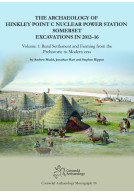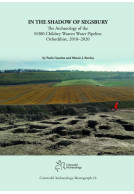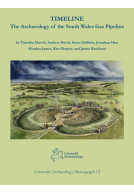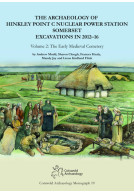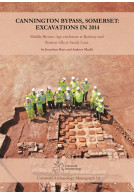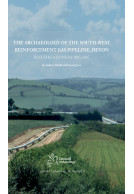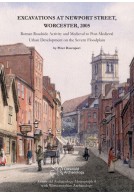Medieval and Post-Medieval Occupation and Industry in the Redcliffe Suburb of Bristol (Hardback)
Excavations at 1-2 and 3 Redcliff Street, 2003-2010
Imprint: Cotswold Archaeology
Series: Cotswold Archaeology Monograph
Pages: 204
Illustrations: 79
ISBN: 9780993454516
Published: 31st March 2016
Script Academic & Professional
Series: Cotswold Archaeology Monograph
Pages: 204
Illustrations: 79
ISBN: 9780993454516
Published: 31st March 2016
Script Academic & Professional
You'll be £19.95 closer to your next £10.00 credit when you purchase Medieval and Post-Medieval Occupation and Industry in the Redcliffe Suburb of Bristol. What's this?
+£4.99 UK Delivery or free UK delivery if order is over £40
(click here for international delivery rates)
Order within the next 37 minutes to get your order processed the next working day!
Need a currency converter? Check XE.com for live rates
(click here for international delivery rates)
Order within the next 37 minutes to get your order processed the next working day!
Need a currency converter? Check XE.com for live rates
Excavations at 1–2 and 3 Redcliff Street, Bristol, crossed a number of historic properties and revealed domestic and industrial remains dating from the establishment of the Redcliffe suburb in the 12th century through to the later post-medieval period. Cloth-dying was the dominant industry in Redcliffe in the 12th and 13th centuries, and the well preserved remains of dye-stuffs as well as leather shoes and off-cuts from a cobbler’s workshop were recovered from water-logged pit fills. The pits also yielded the largest assemblage of pottery of its kind from the city to date. The presence of stone-built dye-vat hearths suggest that cloth dyeing continued into the 14th century, when a pair of substantial town houses were also built. Late 14th-century remains include a furnace for lead-bronze casting, which produced cauldrons, posnets and smaller items, including candlesticks, and heralded a new phase of industry that became the pre-eminent activity for the next 200 years. The reverberatory furnaces are amongst the earliest examples of this advanced form of furnace known in Britain. In the 17th century, historic properties were amalgamated to establish a sugar refinery. Other significant aspects of the site evidence include the re-use of architectural fragments from the medieval church of St Thomas, and a large assemblage of clay-pipe kiln material. The discussion and interpretation of the excavated remains is augmented by documentary and historical research which, combined with evidence from other excavations in Redcliffe, further enriches the story of the urban development and economic history of this important suburb of Bristol.
Customers who bought this title also bought...
Other titles in the series...
Other titles in Cotswold Archaeology...










